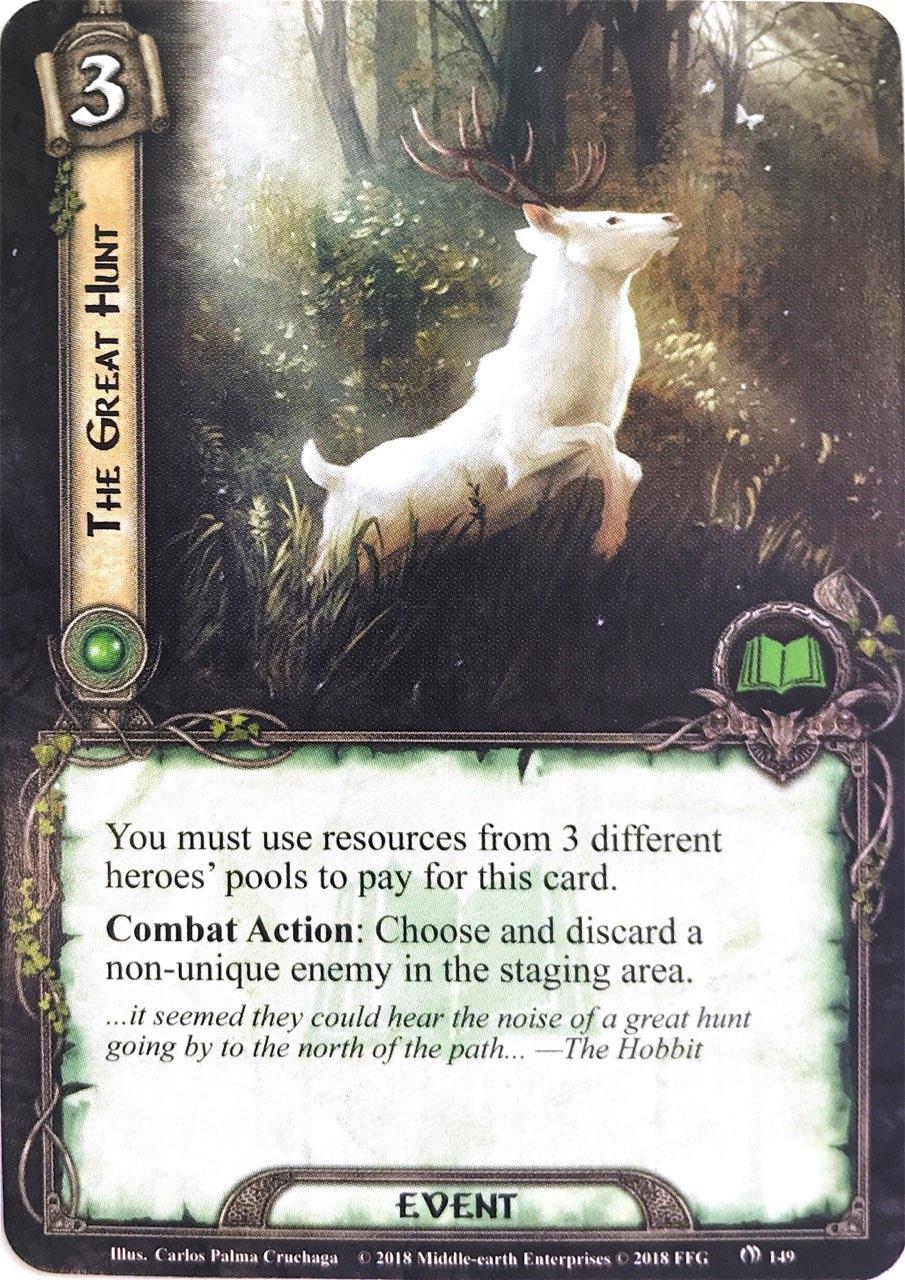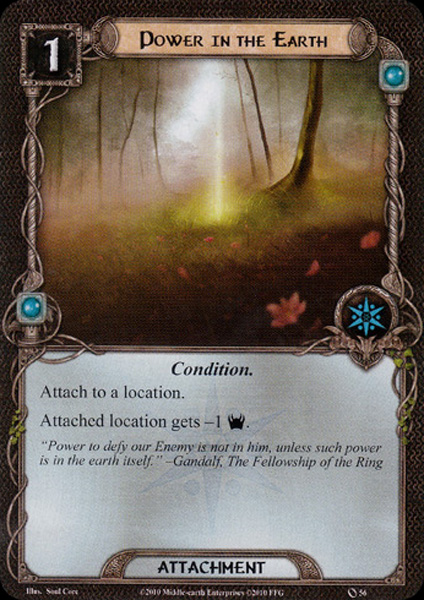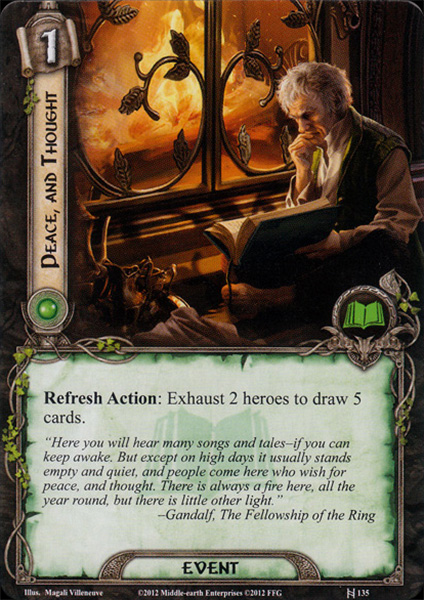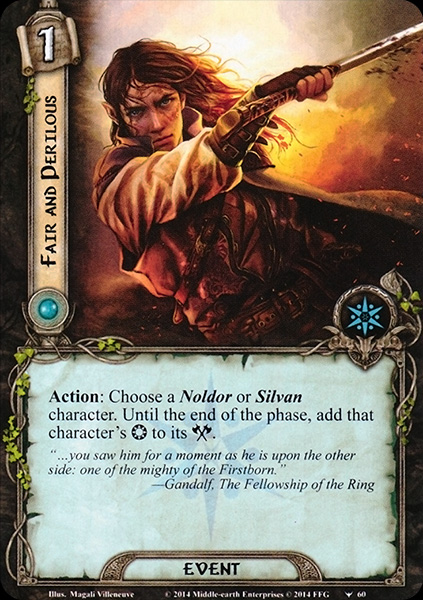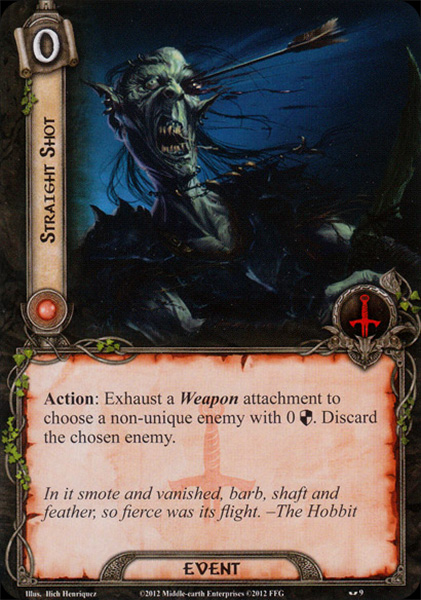Oh my, what a dreamy artwork! The stag looks half wolf to me, but of course the symbol of Thranduil should bear some fierceness.
So this card requires you to have three heroes, a sphere with limited resource access. You've got Bifur in multiplayer and Love of Tales, which can be quite strong, but your choice of songs may be limited. And sadly, cost reduction is not an option for this one. You can add in a hero and give them sphere access to solve resource problems, but that is more setup required and you need to be sure to have that arranged when the enemy drops in. Playing this event costs you a round of resources any way.
And what do you get? You get rid of an enemy in the Staging Area. A powerful effect that is commonly accompanied by limitations. The first one I already mentioned, it is a strong limitation compared to e.g. Hunting Party. The second one is timing: it is a Combat Action. There is no way you can get rid of the enemy before quest resolution. And it needs to be an enemy with a higher engagement cost than your threat because it only works on enemies in the staging area. If you do not engage the enemy anyway it will probaby be in staging next quest phase anyway, so in a card by card comparison, Hunting Party is much stronger. Within you have several options: for weak enemies there is Expecting Mischief, if you are able to sneak in Faramir (e.g. with Elf-stone), you might deal some more damage. And the biggest baddy with the same "not engaged" limitation is Haldir of Lórien, whom you can power up to take out most of the possible targets with a single attack. Where this card is okay at is getting you Guarded attachments. If you are unlucky and get an enemy you cannot kill so easily. There is no Guarded (enemy) attachment in , Stone of Elostirion is straight ineligible and for the others you need to depend on luck or encounter analysis (luckily there are lots of options to look at or manipulate the encounter deck, Henamarth Riversong, Far-sighted, Risk Some Light...)
So what are possible targets? Enemies may not be immune nor unique. Later in the game, most bosses that are worth the three resources have at least one of these feats. The famous Hill Troll is the most obvious choice, followed by Hummerhorns. Mûmakil and Oliphaunts are very good targets, ship enemies to avoid Boarding and many enemies with nasty engagement effects (e.g. Haradrim in Two Towers).
So far my only mono deck was a trap deck, which has other ways to deal with enemies, but Ships and Mûmaks don't fall into traps. Here this card really shines.
